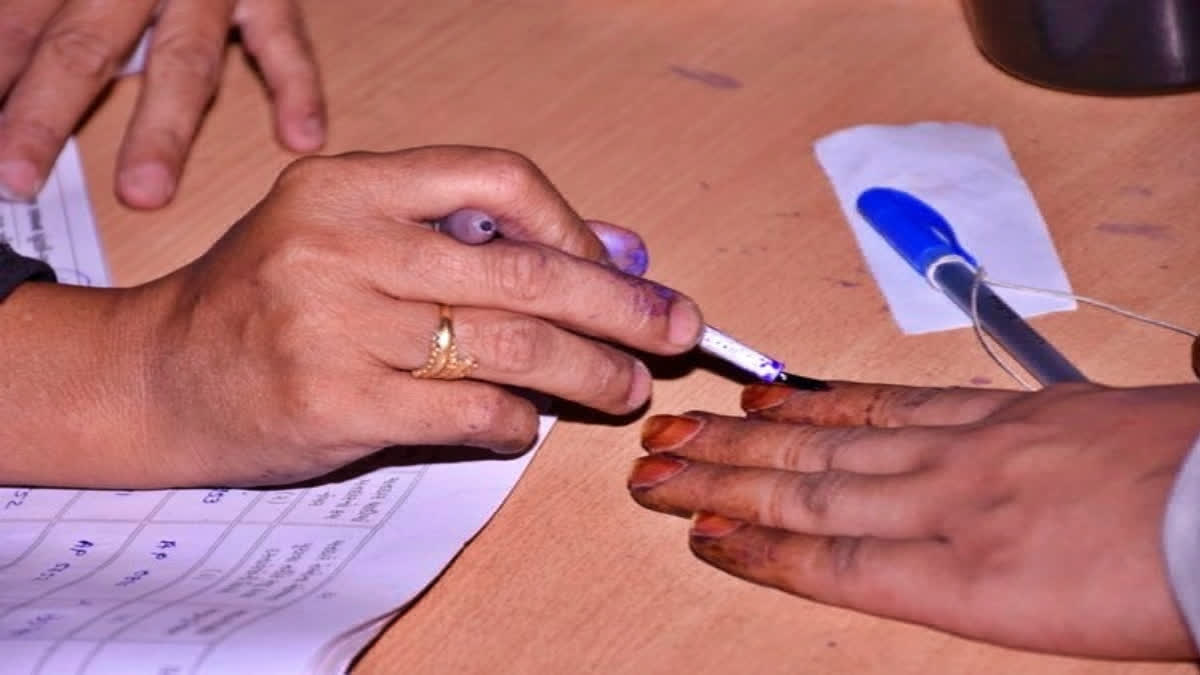New Delhi: From 7 per cent in 2009 to 9.6 per cent in 2024, the number of female candidates contesting the Lok Sabha elections saw a steady rise in 15 years, according to an analysis by the poll rights body ADR.
This year, 797 women are in the fray, constituting 9.6 per cent of the total 8,337 candidates. This marks an increase from previous general assembly elections which recorded female representation of 9 per cent in 2019, 8 per cent in 2014, and 7 per cent in 2009, the analysis by the Association of Democratic Reforms (ADR) showed.
In the 2009 Lok Sabha elections, there were 556 female candidates, making up 7 per cent of the total 7,810 candidates. This number increased to 640 (8 per cent of 8,205) in 2014 and further to 716 (9 per cent of 7,928) in 2019. This year, the Bharatiya Janata Party (BJP) leads among the major parties with 69 female Lok Sabha nominees out of 440, making up 16 per cent of its total candidates. The Congress follows with 41 women out of 327 candidates, constituting 13 per cent.
Significantly, smaller parties and regional players exhibit higher proportions of female candidates. For instance, the Naam Tamilar Katchi has an equal gender representation with 20 out of 40 candidates being women, translating to 50 per cent. The Lok Janshakti Party (Ram Vilas) and the Nationalist Congress Party each have 40 per cent female candidates, with two out of five being women.
Among prominent parties, the All India Anna Dravida Munnetra Kazhagam (AIADMK) and the All India Forward Bloc have the lowest levels of female representation at 3 per cent. Some parties with notable female representation in this year's parliamentary polls include the Jharkhand Mukti Morcha (JMM) and the Biju Janata Dal (BJD), each with 33 per cent, the Rashtriya Janata Dal (RJD) with 29 per cent. The Samajwadi Party (SP) has 20 per cent female representation, and the All India Trinamool Congress (AITC) 25 per cent.
Thirteen per cent of the Lok Sabha candidates of the Communist Party of India (Marxist) are women and the figure stands at 8 per cent for the Bahujan Samaj Party. Parties such as the Dravida Munnetra Kazhagam (DMK) and the Communist Party of India (CPI) has female representation at 14 per cent and 7 per cent, respectively. The Janata Dal (United) (JD(U)) and Shiv Sena each have 13 per cent female candidates, while the Jharkhand Mukti Morcha has 33 per cent women nominees.
Both candidates of the Apna Dal (Sonelal) are women, TDP and BRS each have 6 per cent female candidates, Shiromani Akali Dal and Nationalist Congress Party-Sharadchandra Pawar each have 8 per cent female contestants, while Shiv Sena (UBT) has 10 per cent. Independents, comprising a significant portion of the candidate pool, have 276 women out of 3,903 Lok Sabha nominees, representing a modest 7 per cent.
Other parties collectively account for 252 women out of 2,490 candidates, which is about 10 per cent. This is the first election since the passage of the women's reservation bill to reserve one-third of seats in Lok Sabha and state assemblies for women, reviving a bill pending for 27 years for want of consensus among parties. The bill is yet to come into effect.
The current figure of 797 female candidates in 2024 represents a 9.6 per cent share of the total candidate pool of 8,337. Only two candidates from the third gender category are contesting the polls this year, both as independents. During the first phase of the elections held on April 19, out of 1,618 contesting candidates, only 135 were women.
This pattern continued in the subsequent phases, with women candidates remaining a small fraction of the total. The second phase held on April 26 saw 1,192 candidates of which 100 were women. The phase 3 polling on May 7 had 1,352 candidates, including 123 women.
In phase 4 on May 13, of the 1,710 contestants, 170 were women. Phase 5 on May 20 had the fewest candidates at 695, with 82 women, while the sixth phase 6 had 92 women out of 866 candidates. In the last phase scheduled for June 1, there will be 904 candidates, with only 95 women.



